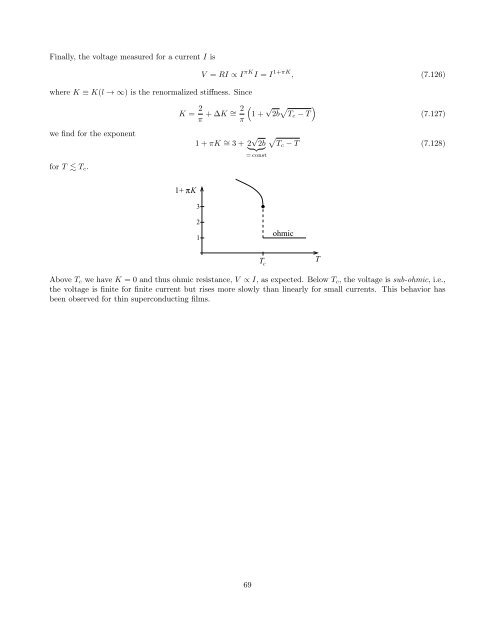Carsten Timm: Theory of superconductivity
Carsten Timm: Theory of superconductivity
Carsten Timm: Theory of superconductivity
You also want an ePaper? Increase the reach of your titles
YUMPU automatically turns print PDFs into web optimized ePapers that Google loves.
Finally, the voltage measured for a current I is<br />
V = RI ∝ I πK I = I 1+πK , (7.126)<br />
where K ≡ K(l → ∞) is the renormalized stiffness. Since<br />
K = 2 π + ∆K ∼ = 2 π<br />
(<br />
1 + √ 2b √ )<br />
T c − T<br />
(7.127)<br />
we find for the exponent<br />
for T T c .<br />
1 + πK ∼ = 3 + 2 √ √<br />
} {{<br />
2b<br />
} Tc − T (7.128)<br />
= const<br />
1+ πK<br />
3<br />
2<br />
1<br />
ohmic<br />
T c<br />
T<br />
Above T c we have K = 0 and thus ohmic resistance, V ∝ I, as expected. Below T c , the voltage is sub-ohmic, i.e.,<br />
the voltage is finite for finite current but rises more slowly than linearly for small currents. This behavior has<br />
been observed for thin superconducting films.<br />
69

















